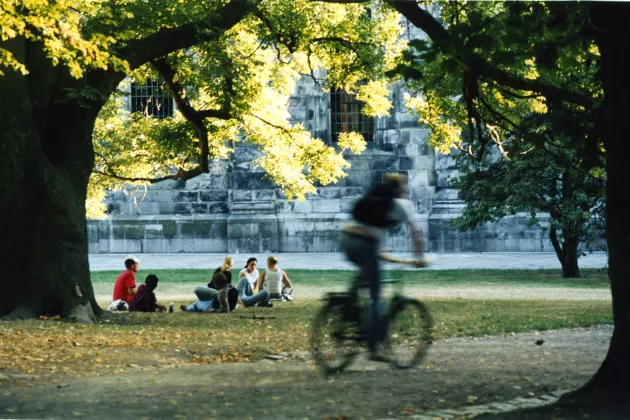Lund University currently has around 8,000 employees and 46,000 students, which means a lot of people travelling to and from the various campuses (Lund, Malmö and Helsingborg) every day. This makes demands on public transport, cycle lanes and parking spaces. The flow of traffic and availability of parking spaces affect the image of the city and the perception of the campus.
Under Lund University’s Sustainability Plan 2020-2026, proposals for strategies for travel to and from Lund University are to be drawn up. The aim is to reduce the impact our travel to and from work/studies has on the climate. Another aim is to reduce the demand for parking spaces, to make more space available for strategically important expansion within the Lund University campus areas.
The project is to produce a firmly established and approved action plan that will hopefully lead to new travel habits, with fewer journeys by car to and from work. The action plan is to be based on the planned workshops and discussions that are going to be held with a reference group, which will include representatives from all faculties, and a steering group. The reference group is made up of chosen representatives from all faculties.
A preliminary study has been done in which ways of reducing the need for car parking and encouraging more sustainable ways of travelling have been examined. The preliminary study carried out by consultancy firm SWECO has resulted in the report “A strategy for travel to and from Lund University” (from January 2021). The preliminary study also suggests new measures which can reduce the need for car parking and encourage more sustainable ways of travelling.
The report was based partly on a parking census carried out by SWECO. The parking census was focused on car and cycle parking on the campus in Lund. The census was conducted during 2019 (before the pandemic).
The report was also based on a travel habits survey conducted by Akademiska Hus in 2016, when staff from all three campuses were asked about how they get to their workplace, where they live and where they work. Staff in Lund, Malmö and Helsingborg were included in the survey, with around 46% responding.
The results showed that 40% of journeys to and from campus are on foot or by bike, 33% by public transport and 27% by car. Among those who work and live in Lund, a majority cycled or walked to work, but the farther away the employee lived, the more commonplace it became for them to travel to work by car. The more centrally-located the workplace, the greater proportion who walked, cycled or used public transport.
In the travel habits survey, respondents were able to suggest activities that might alter their travel habits. Proposals that came up included discounted travel passes, better public transport options, and secure cycle parking facilities.
Given that a few years have passed, and that the pandemic has changed our commuting a great deal, the figures from 2016 might need to be updated. That is why it is time for a new travel habits survey. It will begin in October 2022 and will be distributed to around 6,000 members of staff and students, who will answer a number of questions in a questionnaire about their travel habits.
In order to obtain the best possible overview, we would be grateful if all who receive the questionnaire make the time to answer.


